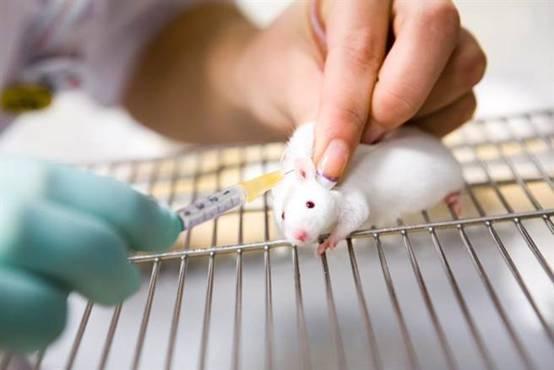
According to Taiwan’s “Zhongshi Electronics Newsâ€, scientists quickly cleaned up the “zombie cells†that were lost in animal tissues through the use of drugs, and it turned out to have a good effect. It seems that the life of the old mouse was really prolonged.
According to foreign media reports, Unity Biotech Inc. of San Francisco, Calif., developed a drug that dissolves and kills aging cells. In the 2016 study, rats were tested to remove aged zombie cells, including fur. Density, renal function have been improved, and even improved lung disease and repaired damaged cartilage. They plan to conduct a number of clinical trials in the next two and a half years to further test the relevant effects. However, they are not able to get a subsidy from the US Food and Drug Administration because "natural aging" is not a condition that requires treatment.
The report said that although not supported by the US Food and Drug Administration, Ned David, the head of the biotechnology company, will still vigorously promote the study to understand the basic process of aging, and to reverse or delay The method of aging. Neil, director of the Institute of Geriatrics at the Einstein College of Medicine Nir Barzilai also supports related research. He said: "I believe that aging cell lysis is an upcoming drug that is likely to be used in the elderly in the next few years."
Hayley McDaid, a pharmacologist at the Einstein College of Medicine, said that in cancer-bearing mice, after chemotherapy, normal cells take up to two weeks to age before the cells age. After that, it will return to a state that is prone to hyperplasia, showing that the aging cells are only different in size from the cancer cells. To support this idea, the researchers removed cancer cells from cancer cells after undergoing chemotherapy, which reduced the chances of cancer recurrence.
The so-called aging cells or zombie cells refer to cells whose properties have changed after multiple divisions. They secrete different cytokines, and the extracellular proteins are slightly different, and different strategies are used to avoid death. However, aging cells are not cancer cells, so they are not attacked by the body's immune system. How to judge aging cells will become a new challenge. In the past, researchers had to label cells on a large area to record the age of the cells, which was quite laborious and expensive.
Earlier in 2017, the research team developed a new method for labeling aged cells. Valli, Weizmann LeMada, Israel? Valery Krizhanovsky and his colleagues stained and imaged aging molecular markers in tissues to analyze the number of senescent cells in tumors and aging tissues from mice, and gradually found the characteristics of senescent cells. Kuznowski said: "Based on the new judgment, we can see 1% of aging cell characteristics in young mice. However, in two-year-old mice, aging cells are characterized by up to 20%. Show that this notation should be trustworthy."
The researchers identified signals from six aging cells that could use these clues to prevent cellular senescence or to activate tissue.
Since the beginning of 2015, the team has identified the first cell lysing agent, and has now issued 14 kinds, including small molecules, antibodies, etc., and began experimenting with mice in March 2017 to confirm the recovery of aging mouse skin. The luster also delays the decline of the kidneys and heart caused by aging. On average, cytosols extend the lifespan of animals by about 25%. However, it also has side effects that can delay wound healing.
Urinalysis test strips refer to test strips that test for bilirubin, urobilinogen, ketone bodies, ascorbic acid, glucose, protein (albumin), blood cells, PH, etc. in urine.
Detection principle
1. pH: The pH value in the range of 5-9 is measured by the pH indicator, and the pH value of the fresh urine of a normal person is between 5-7.
2. Nitrite: The reaction is based on the reduction of nitrate to nitrite by Gram-positive bacteria in the urine. The nitrite reacts with p-aminobenzenesulfonic acid to form diazonium compounds, which are then combined with N-(1-naphthalene) )-3 aminopropanesulfonate combined with a pink color.
3. Glucose: According to the reaction principle of glucose oxidase, glucose oxidase specifically oxidizes glucose to generate glucuronic acid and hydrogen peroxide. Under the action of hydrogen peroxide, hydrogen peroxide oxidizes the indicator and turns color. .
Classification
Urinalysis test strips are divided into visual series and machine series. The visual inspection series is divided into several models according to different inspection items; the machine inspection series is divided into several models according to different applicable instruments.
1. Classification by measurement method
1) Visual inspection series
When observing the result, compare the color with the standard color code within the time specified on the color code, judge and read the result.
2) Machine test series.
For instrument operation, refer to the instruction manual of the Urine Analyzer used.
2. According to the number of measurement items
There are single-item, 2-item, 4-item and multiple test strips. Currently, 10-item or 11-item multiple test strips are most commonly used in hospitals.
3. Classification by structure
Urinalysis test strips with single-layer membrane structure and multi-layer membrane structure.
Urine Reagent Strips,Urine Test Strip,Urine Sugar Strip Test,Visual Urine Analysis Strips
Jilin Sinoscience Technology Co. LTD , https://www.jlgkscience.com